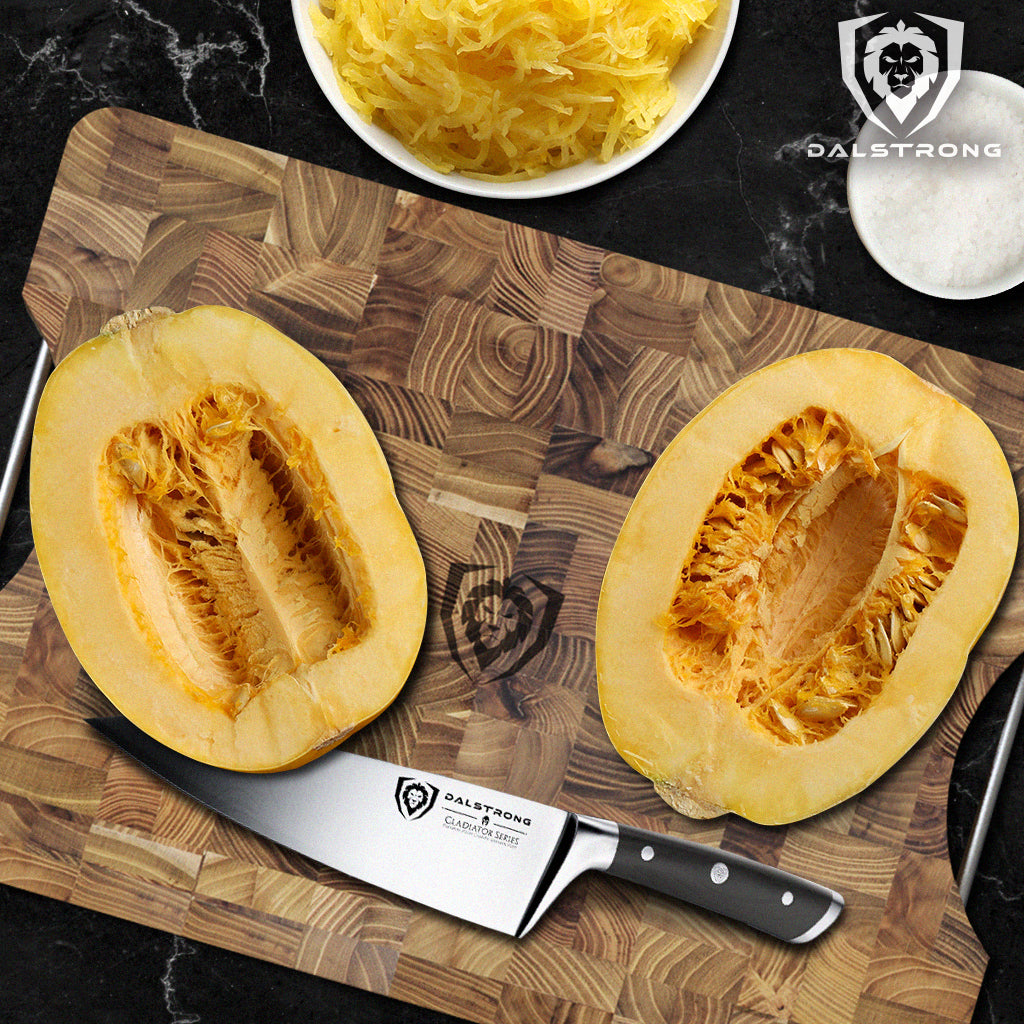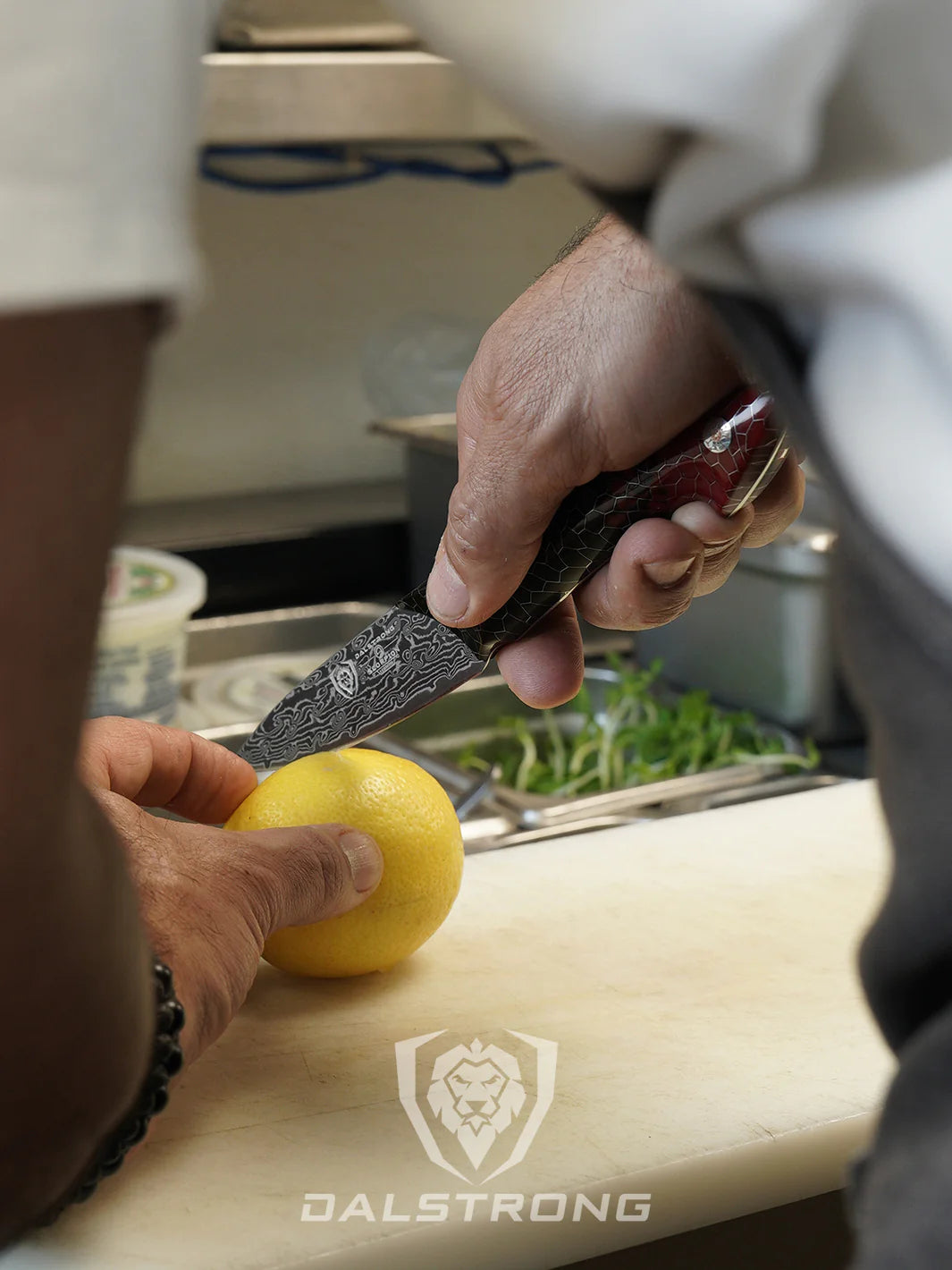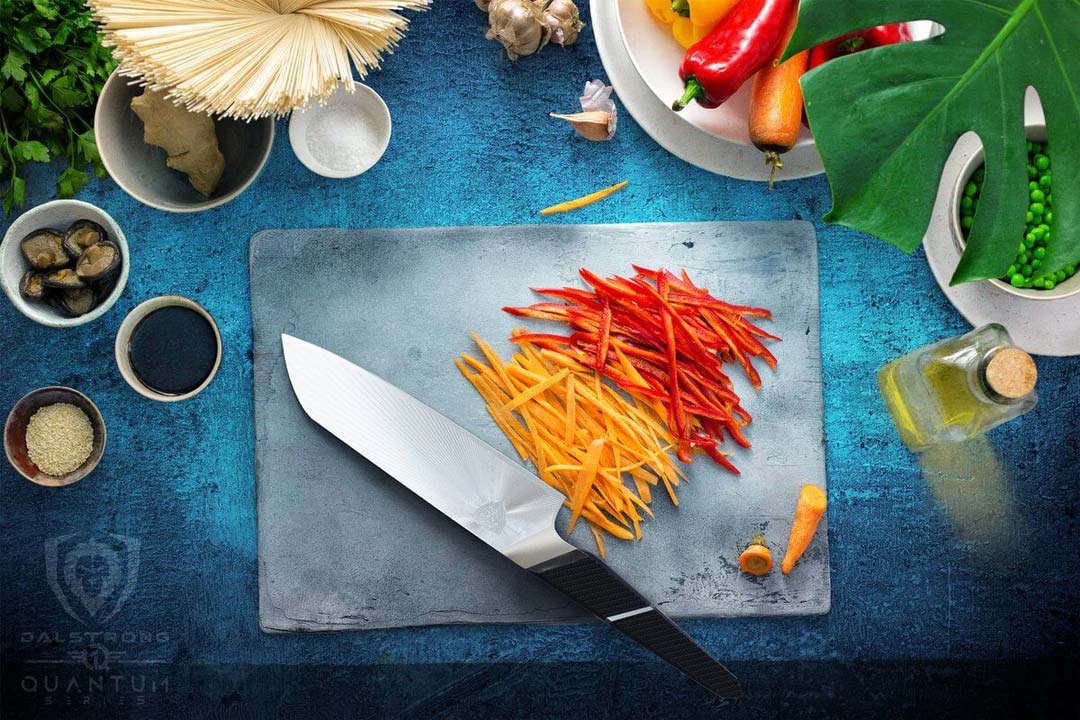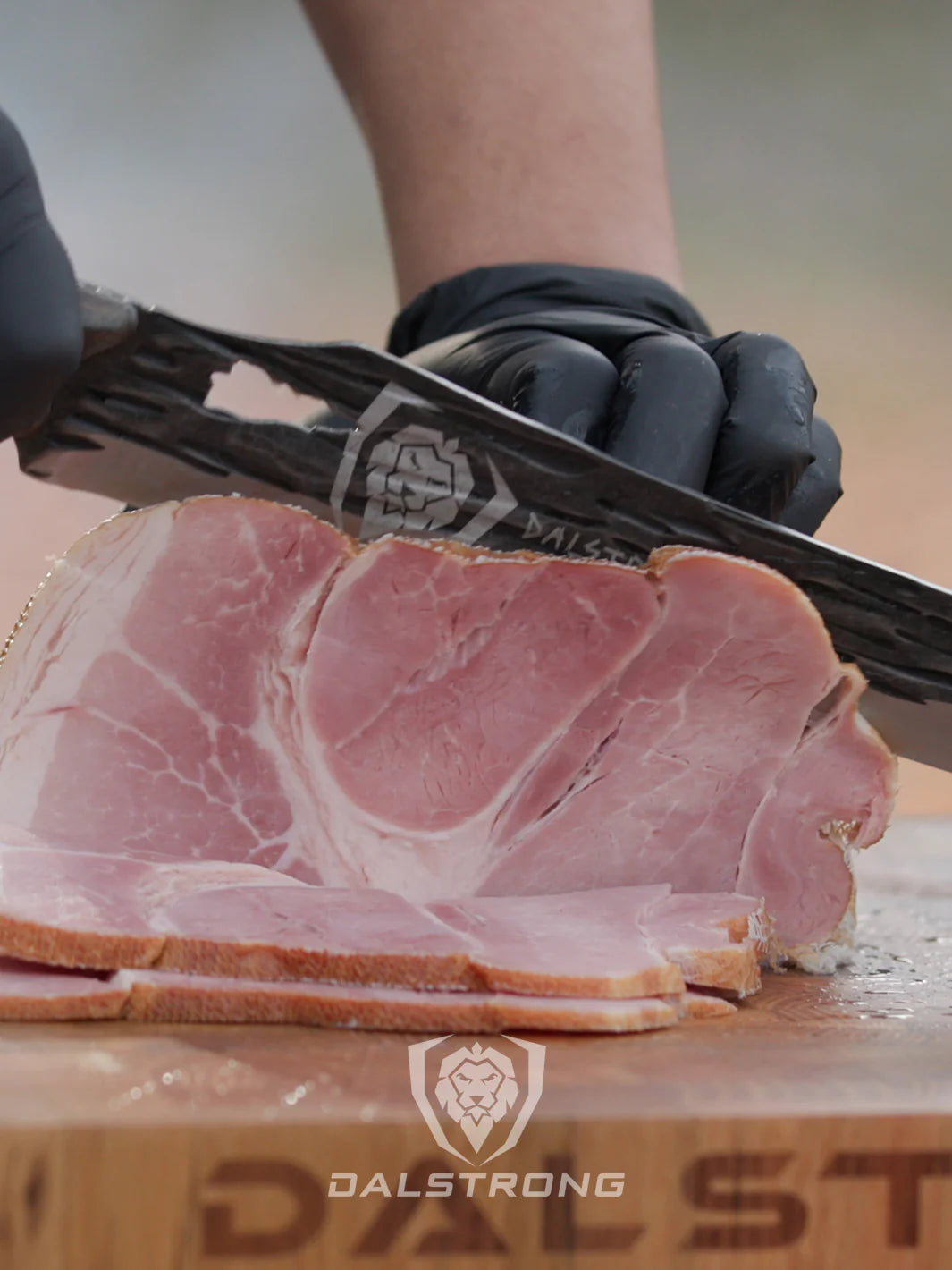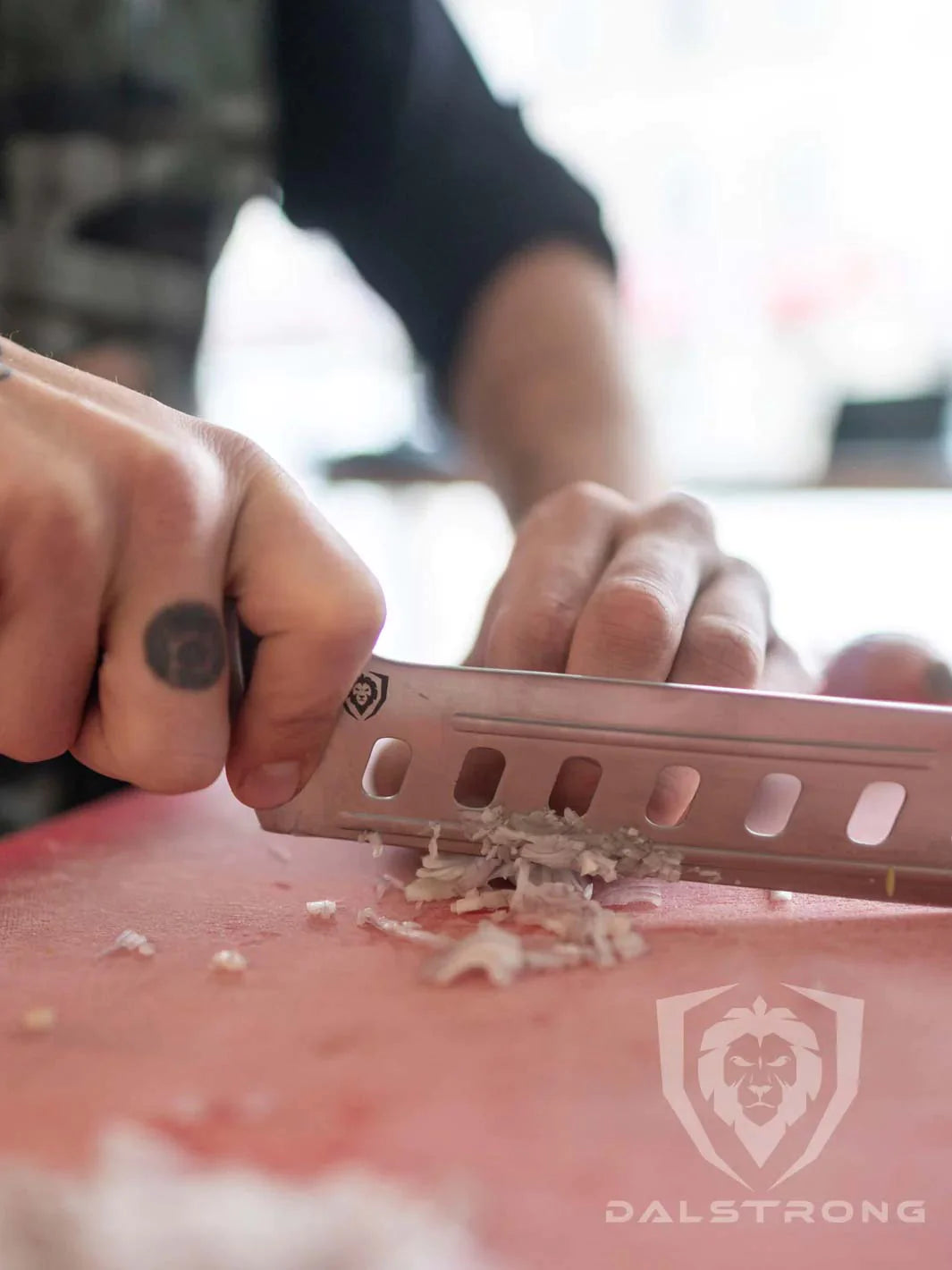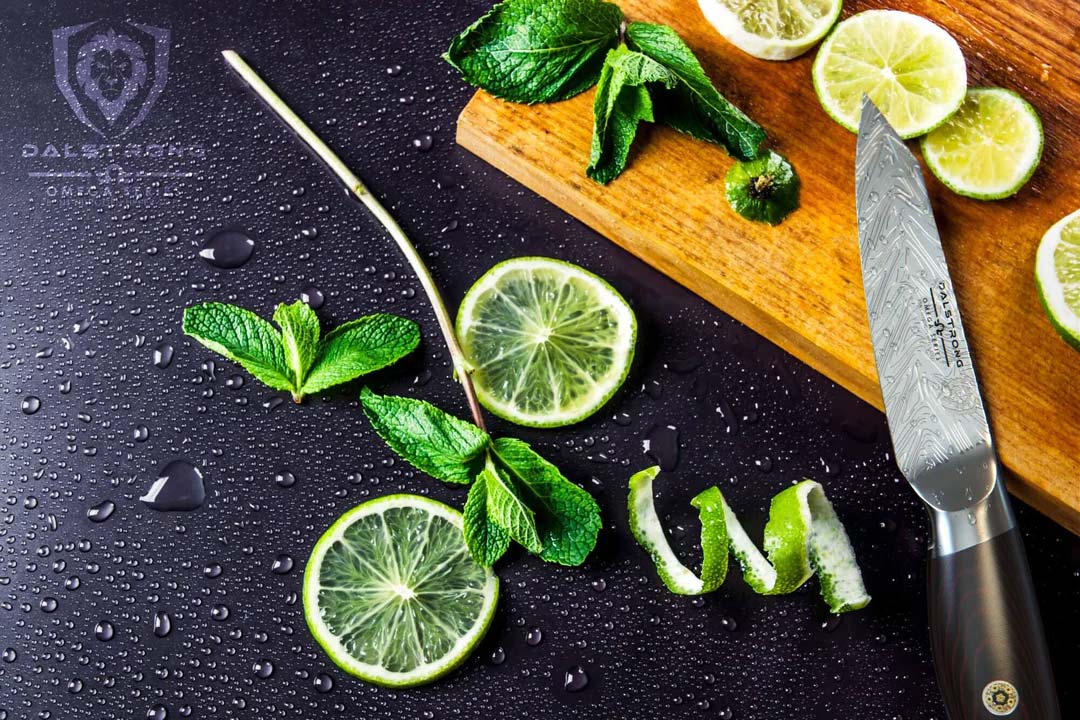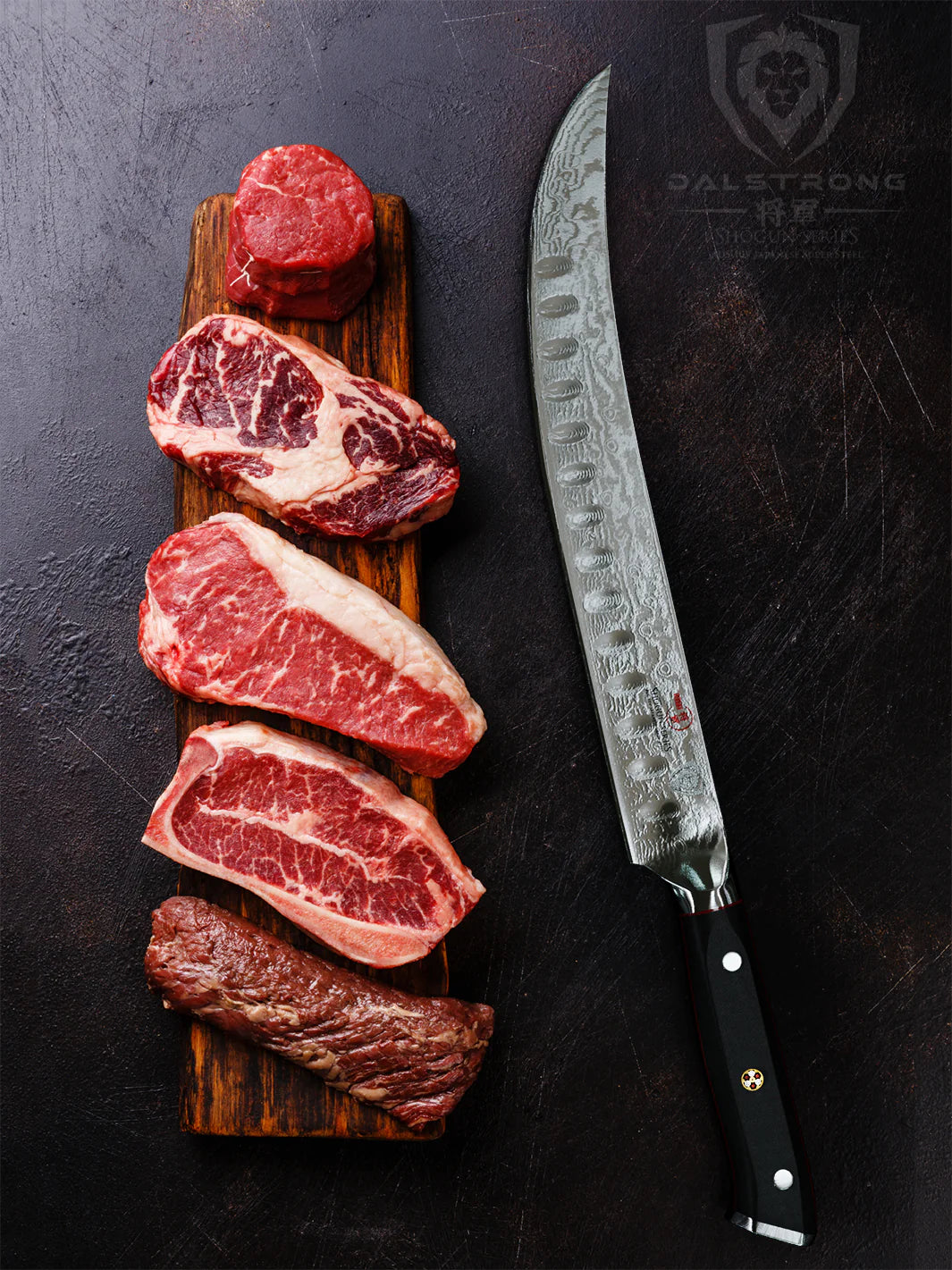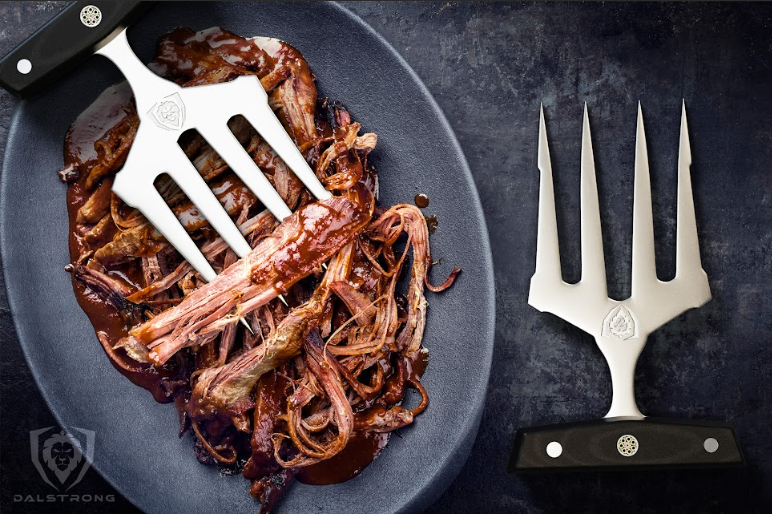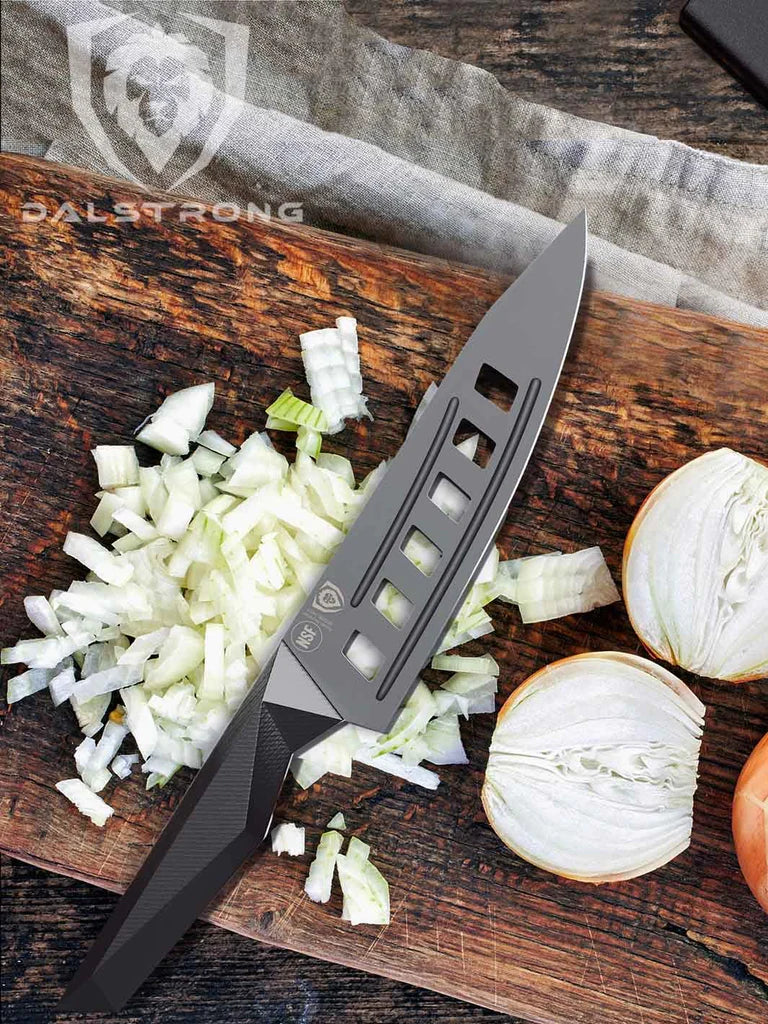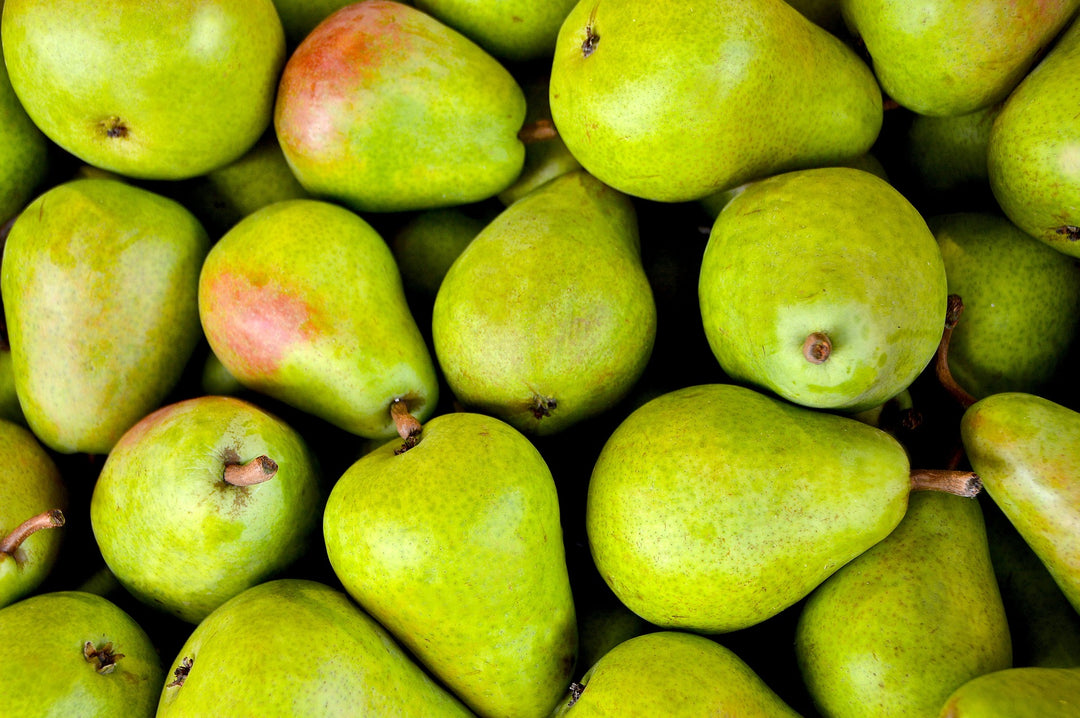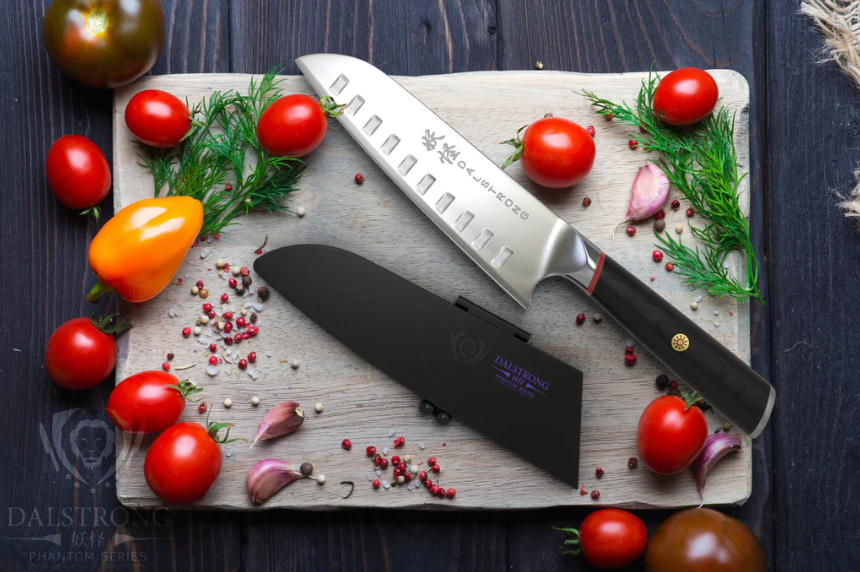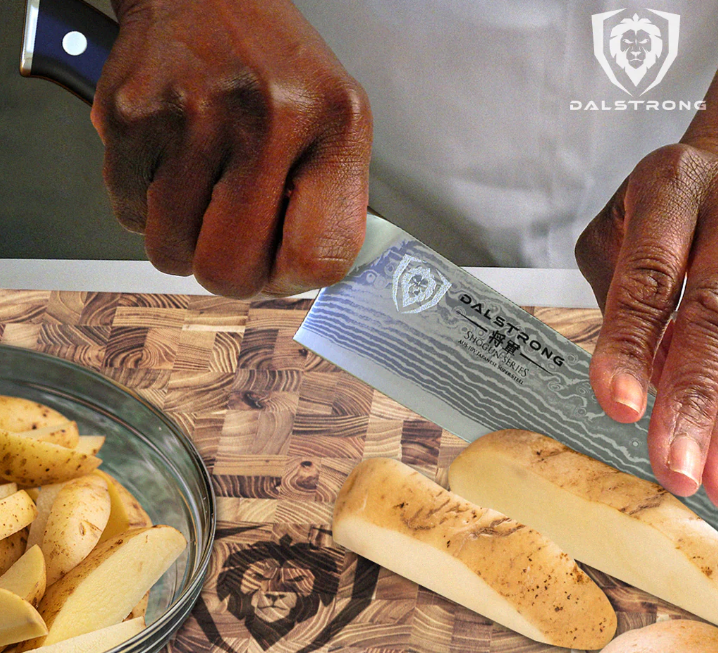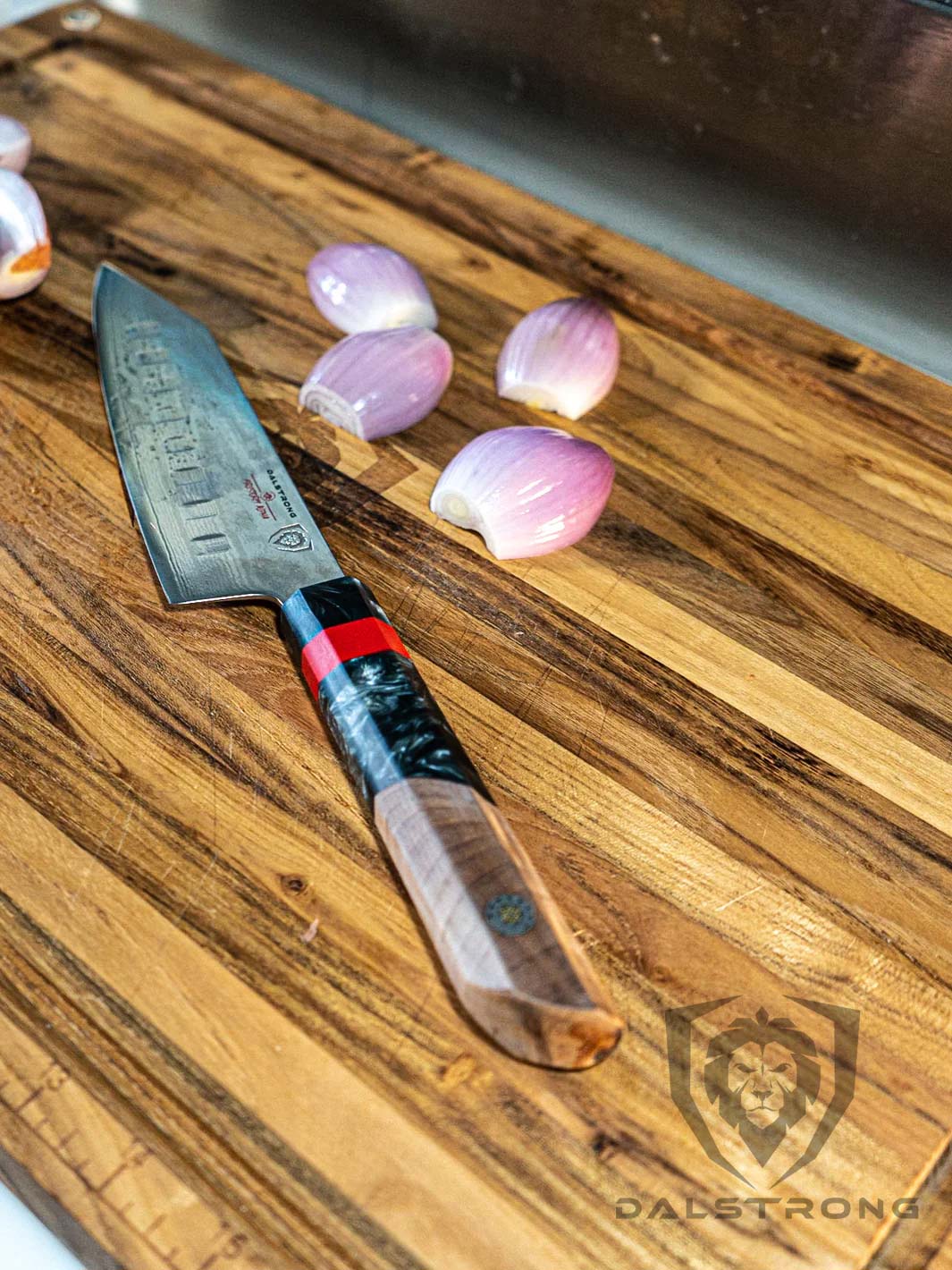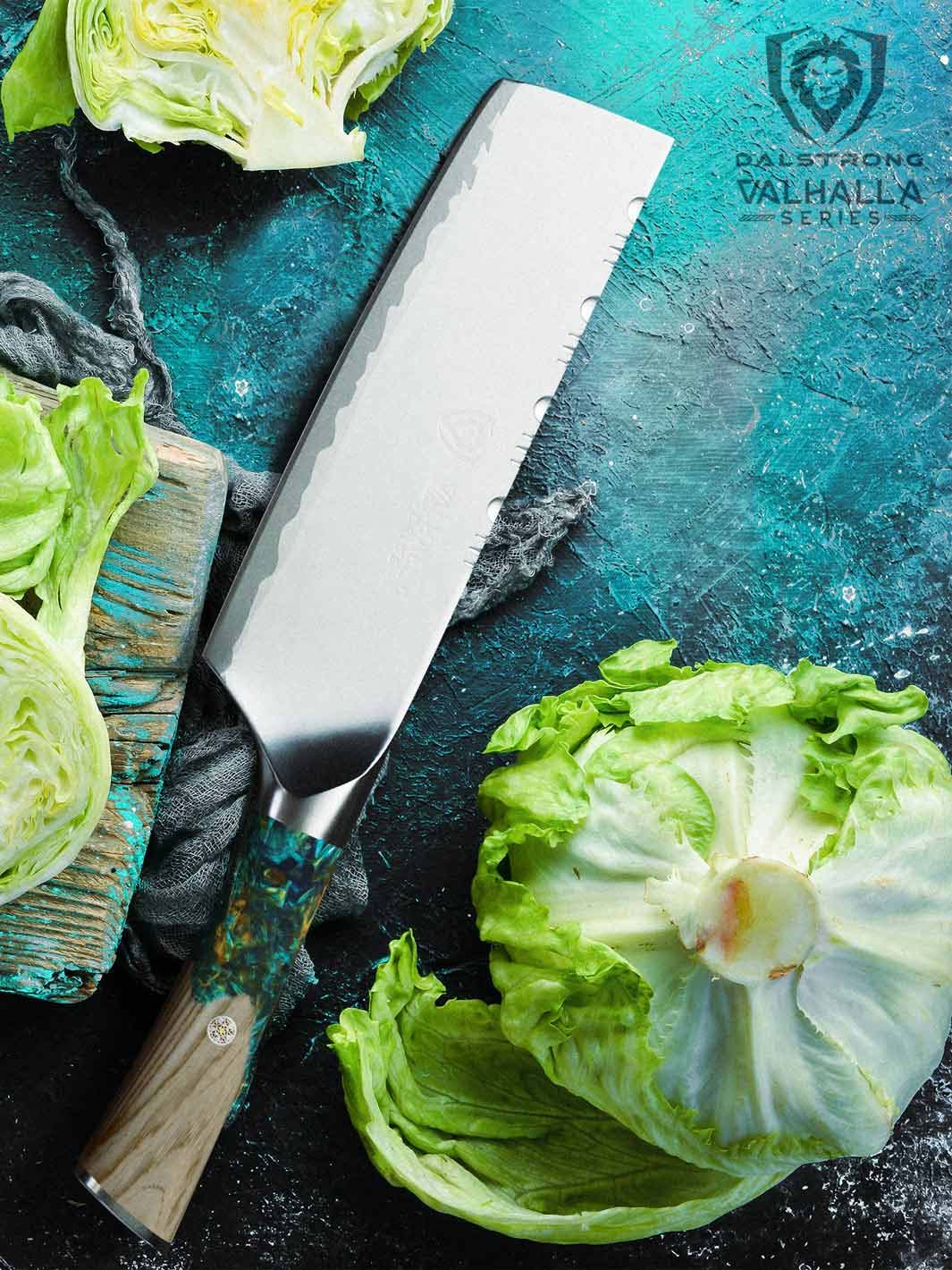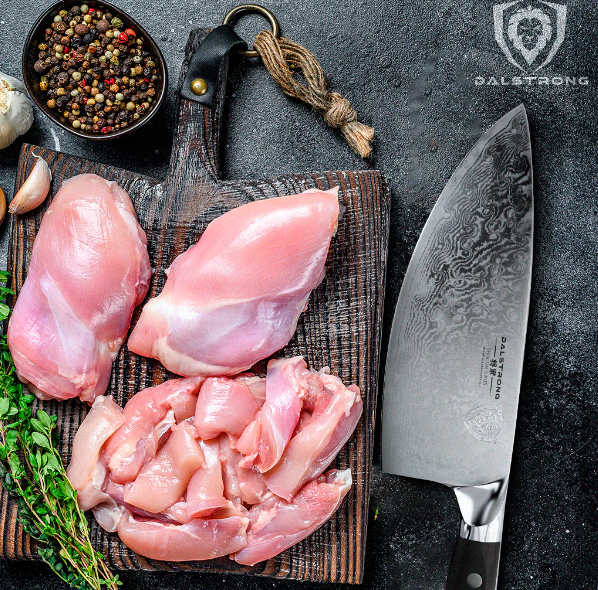How to Cut Spaghetti Squash Like a Pro in 8 Easy Steps
Chef's Knife 7'' | Gladiator Series | Dalstrong ©
Quick Overview: How to Cut Spaghetti Squash?
- Set up your cutting station
- Preheat the oven
- Cut off the top and bottom ends
- Scoop out the seeds
- Drizzle with olive oil
- Bake until golden
- Fluff interiors with a fork
- Serve as desired
Unique, delicious, and healthy- these three words describe a big, juicy spaghetti squash perfectly. Some might also say that it’s almost magical. In the beginning, it is just a firm, oval squash in appearance, just like any other squash you might find in the market. But once roasted, this squash takes on a completely different personality.
While this vegetable can look big, don’t be intimidated by them when you see one at the grocery store. You might not know this if you’ve never tried it but there are so many ways on how to cook spaghetti squash. You can turn spaghetti squash into hash browns, bake spaghetti squash, roasted spaghetti squash, instant pot spaghetti squash, their self-contained noodle bowl, use it as a substitute for rice or pasta, or even make pizza crust with them.
Read on to know how you can tackle this juicy vegetable and learn how to cook spaghetti squash.
1. What Is Spaghetti Squash?
Also called vegetable spaghetti, spaghetti squash or noodle squash is an oblong variety of winter squash. This type of squash can vary in color, from ivory to yellow to orange. The orange varieties have a high content of carotene and its center may contain large seeds.
The flesh of spaghetti squash is bright yellow or orange. This raw flesh of the squash is solid. The flesh on cooked spaghetti squash falls away from the outside skin in spaghetti-like squash noodles, hence the name. Once the spaghetti-like texture of the squash is exposed, you can eat it raw by tossing it in olive oil and some spice of your choice
2. Tools You Will Need
Here’s a list of tools you must gather before cooking spaghetti squash:
- Cutting Board: This vegetable is big, round, and can be juicy. To reduce the mess and make sure your spaghetti squash doesn’t roll all over the kitchen floor, you will need a sturdy cutting board.
- Razor-sharp Chef’s Knife: This big veggie can get difficult to slice open if you do not have a reliable knife. To ensure clean halves of the spaghetti squash, you will need a razor-sharp chef’s knife.
- A Spoon and a Fork: A spoon will be required to scrape out the seeds in the middle of the squash. You will need a fork to scrape the flesh of the spaghetti squash to give it the “pasta-ish” texture and look.
3. How to Cut & Cook Spaghetti Squash
|
Ingredients |
|
|
Spaghetti Squash |
|
|
Ingredients |
|
|
Method |
|
|
Step 1: Set up your cutting station |
|
|
Step 2: Preheat the oven |
|
|
Step 3: Cut off the top and bottom ends |
|
|
Step 4: Scoop out the seeds |
|
|
Step 5: Drizzle with little olive oil |
|
|
Step 6: Bake until golden |
Note: Cooking times will depend on the size of your squash. Small squash will be done sooner than large squash. |
|
Step 7: Fluff interiors with a fork |
|
|
Step 8: Serve as desired |
|
4. Recipe: Spaghetti Squash with Feta and Kale
|
Spaghetti Squash with Feta and Kale |
|||
|
Prep Time |
Cook Time 15 mins |
Total Time 1 hour 15 mins |
Servings 4 |
|
Ingredients |
|
|
Spaghetti Squash |
|
|
Ingredients |
|
|
Cooking Instructions |
|
|
Step 1: Cooking spaghetti squash |
|
|
Step 2: Heat Olive Oil |
|
|
Step 3: Add garlic, kale, and seasoning |
|
|
Step 4: Add squash |
|
|
Step 5: Add apple cider vinegar and honey |
|
|
Step 6: Garnish with fresh Feta |
|
5. Top Knife Picks to Cut Spaghetti Squash
This big, round vegetable can seem scary and intimidating to handle, especially if it is your first time working with it. However, with a reliable and sharp knife by your side, slicing up this mammoth of a vegetable will be a breeze.
Here are some of my favorite chef’s knives that would help you learn how to cook spaghetti squash.
1) Chef’s Knife 7”- Shogun Series
This knife may seem more narrow and shorter than the others but it is no less menacing and effective when it comes to handling larger vegetables and fruits. With supreme control and a moderate blade length, this highly versatile kitchen knife will help you sail through any culinary challenge including cutting and cooking spaghetti squash recipe.
Pros:
- This knife has proven to be excellent at facing kitchen challenges like slicing, dicing, mincing, and chopping.
- The knife is designed to allow you to go further and longer effortlessly, without causing much wrist fatigue. This makes it a great tool to slice up something as big as spaghetti squash.
- The tapered blade provides minimal slicing resistance, allowing the blade to glide through the squash with minimal flesh damage.
- These knives are also super easy to clean and maintain.
Cons:
- A 7” blade would be perfect if you are new to using a chef’s knife, however, some seasoned cooks would prefer using a slightly longer blade, like that of a 9.5” chef’s knife.
- The price of this knife might not sit well with everyone. If you are a fairly new chef, you would like to get started with a slightly better-priced knife like this one.
2) Chef’s Knife 8”- Gladiator Series
This workhorse is for any chef who takes cooking seriously. This beautifully designed knife is highly impervious to heat, cold, and moisture, making it a solid blade to cut through big, juicy vegetables like spaghetti squash.
Pros:
- The knife is designed for maximum comfort and maneuverability, making it very easy to slice through big and slightly tricky vegetables and fruits.
- The precisely tempered blade makes this sharp knife durable, increasing its lifespan dramatically.
-
The smooth blade of this knife is very easy to clean and maintain.
Cons:
- An 8” blade can get pretty narrow if you also want to use the blade of your knife to scoop and transfer food from the cutting board to the pan or baking tray. In this case, you would want to go for a knife with a broader blade like the 8.5” chef’s knife.
-
If you are a seasoned or professional chef, you might find a 10” chef’s knife to be a more comfortable tool for this task.
3) Chef’s Knife 9.5”- Quantum 1 Series
This is a knife that is meticulously crafted and engineered for exceptional performance to withstand the harsh environment of a modern kitchen. The long blade of this knife makes it possible for you to slice up big fruits and vegetables smoothly, with minimal but long cuts, keeping the flesh of the vegetable intact and damage-free. This is a perfect knife to help you learn how to cook spaghetti squash recipes.
Pros:
- The unique “liquid pattern” on the blade of the knife reduces food drag and increases slicing efficiency.
- The added chromium provides stain resistance, making the blade of the knife super durable.
- The tall blade height provides room for knuckle clearance which helps assist with food prep and chopping activities.
Cons:
- If you are a new chef, a 9.5” blade can get slightly intimidating. In that case, you can go for a slightly shorter, 8” chef’s knife.
- The price tag on this knife can be too steep for some. In that case, you can also check out this knife.
4) Chef’s Knife 10”- Delta Wolf Series
This series of razor-sharp knives takes traditional chef’s knives to a whole new level. The unique thing about this series is that the onyx-black, titanium nitride coating reduces friction and preserves the steel against corrosion, making it more durable.
Pros:
- The carefully designed knife comes with a groove near the spine of the knife that lightens the blade and enhances agility. This helps when you need to crave or chop up challenging vegetables with speed.
- The full tang of the knife provides incredible robustness, making the blade very comfortable to handle.
- These knives are super easy to maintain and clean.
Cons:
- The handle of this knife might not be the preferred choice for everyone. Some would prefer a less slippery handle for better control.
-
For those just starting in the kitchen, this knife can get slightly intimidating. If that is the case you can also pick a slightly shorter blade length like this 8” inch chef’s knife.
5) Chef’s Knife 12”- Shogun Series
This master slicer is a powerhouse blade that is necessary for any professional or home chef who works with large quantities of food. This all-purpose tool is great for chopping, slicing, dicing, and even mincing. Another great knife for cutting and learning how to cook spaghetti squash.
Pros:
- The extra blade length is ideal for heavy-duty food prep of large fruits like watermelon, squash, and pumpkin.
- With a bit more heft than the other knives, this knife can effortlessly break down large cuts of meat or vegetable with a single slice.
- The blade is designed to help you prep twice as much, in half the time.
- The meticulously designed handle is crafted for superior hand control and comfort.
Cons:
- A 12” knife can be intimidating even for someone who has been cooking for a while. I would suggest this blade only if you have prior experience in handling big blades.
- The precision of this knife comes at a price that might be a little too much for some, especially if they are not involved with cooking on a professional level. In that case, you can go for one of the knives listed above.
6. Frequently Asked Questions About Spaghetti Squash
How do you cut spaghetti squash before cooking?
Peel the top half using a peeler. Cut off the stem from the top half. Then slice the top half into ½ inch or 1-inch rounds and then dice the rounds into large chunks. Once diced, the squash is ready to be roasted and added to your favorite soups and stews.
How do you tell when baked spaghetti squash is done?
To check the doneness of the spaghetti squash, flip one half of the spaghetti squash over and run a fork down the top edge of the squash. The squash is done cooking when the fork easily forms spaghetti-like strands with an al-dente texture. Do not overcook it or the squash will become mushy and ruin the dish.
What makes a good spaghetti squash?
Ripe spaghetti squash will be firm, have a golden yellow or dark yellow color, and won’t feel as heavy as it looks. You must pick a spaghetti squash that’s free of soft spots and does not have any cracks in the skin on the outside. To pick a good spaghetti squash, you must also look for a stem that is firm and dry.
How do you soften spaghetti squash to cut it?
To soften spaghetti squash for cutting, preheat your oven to 375°F (190°C). Pierce the squash several times with a fork, then microwave it for about 4-5 minutes to soften the skin. Alternatively, place the whole squash in the oven for 10-15 minutes. This makes cutting easier. Once softened, cut the squash in half, scoop out the seeds, and bake with a sprinkle of brown sugar. Enjoy the benefits of spaghetti squash noodles, like in bean soup recipes.
What is the easiest way to cut a squash in half?
The easiest way to cut a squash, like spaghetti squash, is to first pierce it with a fork and microwave it for a few minutes to soften the skin. Then, carefully slice off the stem end to create a stable base. Next, cut the squash in half lengthwise. This method is safer and more manageable, ensuring a clean cut and easier preparation for dishes like chicken spaghetti squash that replace traditional pasta.
How do you cut and Deseed spaghetti squash?
To cut and deseed spaghetti squash, first, microwave it for a few minutes to soften the skin. Then, slice off the stem end to create a stable base. Cut the squash in half lengthwise. Use a spoon to scoop out the seeds and the stringy interior. This leaves you with the desired spaghetti-like strands. Roast, bake, or sauté the prepared squash as needed for your recipes.
Why wont my spaghetti squash cut?
Spaghetti squash can be tough to cut due to its dense and hard nature. To make cutting easier, try microwaving the whole squash for a few minutes to soften the skin before attempting to cut it. Alternatively, use a sharp, sturdy knife and apply gentle pressure, or even tap the back of the knife with a mallet to create a starting point. Always exercise caution when cutting hard vegetables.
















































































































































